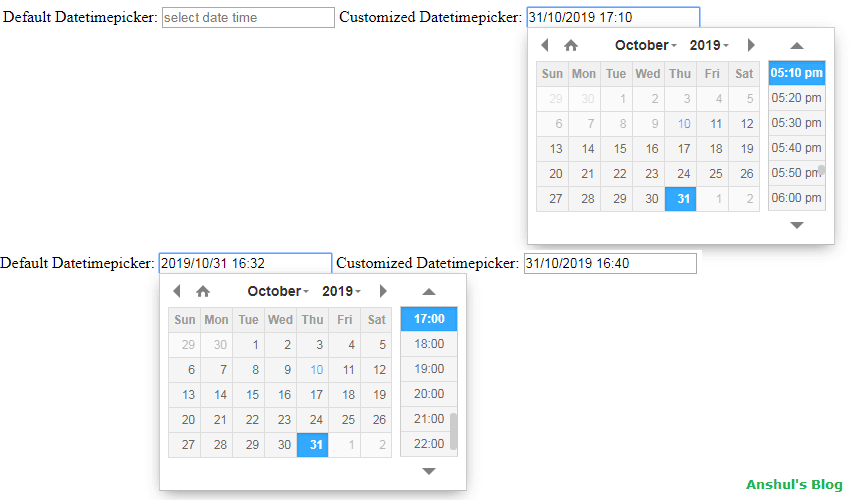
ss is the second, with two digits ( 00 to 59).mm is the minute, with two digits ( 00 to 59).As a special case, 24:00:00 is allowed, and is interpreted as midnight at the beginning of the next day. HH is the hour, with two digits ( 00 to 23).The T is required when specifying the time part. T is a literal character, which indicates the beginning of the time part of the string.

Setdate javascript iso#
The JavaScript specification only specifies one format to be universally supported: the date time string format, a simplification of the ISO 8601 calendar date extended format. There are many ways to format a date as a string. Date.UTC() works similarly, but it interprets the components as UTC time and also accepts a single argument representing the year. The Date() constructor can be called with two or more arguments, in which case they are interpreted as the year, month, day, hour, minute, second, and millisecond, respectively, in local time. There are two groups of Date methods: one group gets and sets various date components by interpreting the timestamp as a local time, while the other uses UTC. In essence, the timezone offset is the offset from UTC time, at the time represented by the Date object and at the location of the host environment. Note that the timezone offset does not only depend on the current timezone, but also on the time represented by the Date object, because of daylight saving time and historical changes. The getTimezoneOffset() method returns the difference between UTC and the local time in minutes.

Note: UTC should not be confused with the Greenwich Mean Time (GMT), because they are not always equal - this is explained in more detail in the linked Wikipedia page.įor example, the timestamp 0 represents a unique instant in history, but it can be interpreted in two ways: Object.prototype._lookupSetter_() Deprecated.Object.prototype._lookupGetter_() Deprecated.Object.prototype._defineSetter_() Deprecated.Object.prototype._defineGetter_() Deprecated.*Place your JavaScript here to run when the page is fully displayed*/ but I wasn't sure exactly what to change to make that work.) Thanks in advance for your help! how would I modify this to get it to calculate Date + 10 AND Date + 5 separately (and set both as different embedded data)? (I'm also OK with setting up the Date + 5 as part of another question, just pulling the answer from the previous question.
Setdate javascript code#
I reviewed several other discussions and tried modifying the code on my own, but instead of adding 5 days to the answer entered, it added 5 days to the original calculation (answer entered + 10). (A friend helped me with this part!) I need to use the same date and add 5 days to create a different embedded data point.

The code below uses the date entered for the question, adds 10 days, and then sets the new date as embedded data. Hello! I'm a complete newbie to JavaScript coding, and I need a little help modifying a code I have to serve a slightly different purpose.


 0 kommentar(er)
0 kommentar(er)
